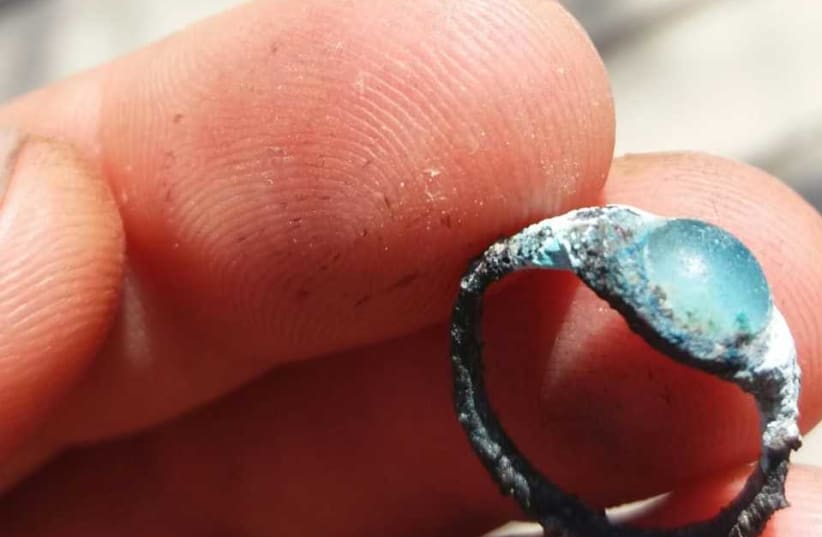Israeli archaeologists found a 2,000-year-old ring in a mikveh [ritual bathhouse] that used to operate on Pilgrim Road during the Second Temple period, the Israel Antiquities Authority said on Sunday.
“Just like today, it would appear that in the past, rings and jewelry were removed before bathing,” said archaeologists Nachshon Zenton, Moran Hajabi, Ari Levy and Dr. Joe Uziel. “This ring allows us to personally connect with an individual’s personal story from 2,000 years ago. The ring, along with other finds, can shed light and expose the lives of people during the Second Temple period.”
Situated upon the ancient city of Jerusalem, the City of David is regarded as the place recorded in the Bible upon which King David established Jerusalem as the united capital of Israel 3,000 years ago. It is also one of Israel’s most intensely excavated archaeological sites.
“It’s incredible to think that this beautiful ring sat at the bottom of a mikveh on the ancient Pilgrimage Road for 2,000 years, until it was uncovered by archaeologists in the City of David. It is yet another piece in the puzzle that is ancient Jerusalem,” said Doron Spielman, vice president of the City of David Foundation, an entity which oversees the national park.
The ancient paved road runs up from the Shiloach (Siloam) pool to the Temple Mount and is thought to have been the main thoroughfare taken by pilgrims to the Temple.
Remains at the City of David site include several water tunnels, including one thought to be built by King Hezekiah that still contains water, as well as the Siloam pool. Scholars suspect that the remains of Acra, a fortress built by Antiochus Epiphanes to subdue Jerusalemites who opposed Hellenization after his attack of the city in 168 BCE, are located at the site as well.
The City of David sits on a ridge that runs south from the Temple Mount in the Wadi Hilweh neighborhood, which is part of the east Jerusalem suburb of Silwan. It was first settled in during the Chalcolithic period (4500 BCE to 3500 BCE), and hit its most fascinating peak of inhabitance during the Iron Age (1200 BCE to 586 BCE). Elaborate rock-cut tombs that date from the ninth to seventh centuries BCE have been purported to contain the remains of the highest-ranking members of a wealthy society. Scholars have argued the royal buried members were from the kingdom of Judah.
Archaeologists have claimed that the site was a walled city during the Bronze Age (3300 BCE to 1200 BCE). Other significant structures at the archaeological site include the city walls and its flanking towers, houses, a columbarium, vaulted tunnels and a large drainage system.
The ring’s date from 2,000 years ago would place it during the Roman period, after Pompey the Great took over Jerusalem from the Hasmonean Kingdom in 63 BCE. Herod the Great was placed as the Jewish client king for Rome over Judea, and he was known for his grandiose architectural expansion of the city.
